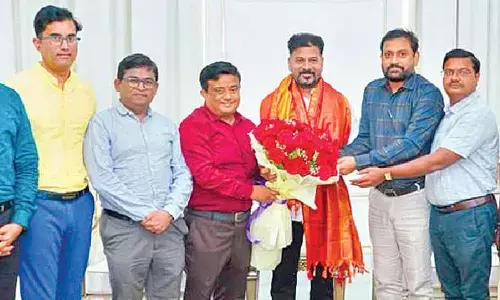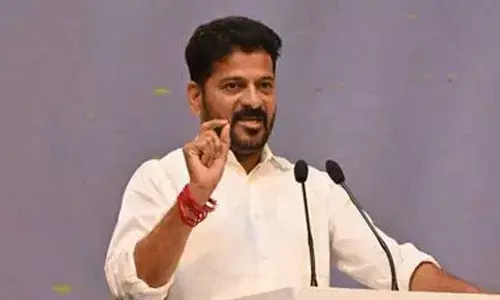Indian diversity remains an untapped resource

Culture can be understood as the characteristics and knowledge of a particular group of people, encompassing language, religion, cuisine, social habits, music and arts as defined by anthropologists
Culture can be understood as the characteristics and knowledge of a particular group of people, encompassing language, religion, cuisine, social habits, music and arts as defined by anthropologists.
It's an undeniable fact that India symbolises cultural diversity (which can prevent internal decay) like no other nation and from time immemorial.
In this context, it is pertinent to discuss how this diversity is helping the country in various aspects.
In the social sphere, for instance, Ramanujacharya emphasized the importance of concept of equality over a thousand years ago. Maxims of Thiruvalluvar dealing with everyday virtues of an individual hold eternal relevance. It is ditto with Swami Vivekananda's syncretism and philosophy of conscious acceptance of all faiths and Tagore's concepts of universalism and humanism.
Rendering yeomen service towards propagating this cultural wisdom are a multitude of folk theatres like VeethiBhagavathamu or Therukkuthu, which spread social message and expose myths by way of innovative and catchy satire-laced presentation.
There are lessons even in the politico-administrative sphere. For examples treatises like Nitisara, Arthashastra, Sukraniti, Matsyapurna have substantial information on governance, idea of welfare state, Financial management, law and order.
The visionary levels were so extraordinary that there are stark similarities to the ideas that are being used in present times with regard to sustainable and inclusive development.
One can also find the influence of man-management dexterity of rulers and emperors in several aspects. For instance, Chola dynasty can be credited with pioneering water harvesting; innovations in warehousing were thanks to Allauddin Khilji and the Mughal patented military administration that remains the most effective of strategies.
Apart from a huge impact on quality of public service delivery, the cultural diversity has economic benefits as well. Exquisite weaving techniques, myriad painting forms, multitudinous folk theatres and musical traditions, innumerable local dance tradition, festivals and fairs, which are unique to India, provide us with immense potential to popularise and commercialise this extant knowledge.
Alas there has been gradual decline in cultural diversity with erosion of patronage being the foremost reason for this abyss. The onslaught of western influences like cinema, cuisine, clothing and music has virtually destroyed the native cultural forms.
What must be done to stem the rot and to protect, conserve, promote Indian cultural diversity, particularly considering that States fail to promote public spaces as centres of thriving cultural activity?
Liberalisation of cultural sector as suggested by Niti Ayog would be a reform of substantial importance, private sector should be motivated to identify synergies and work extensively in all aspects. A simple measure like outsourcing of all heritage buildings within Municipal limits for renovation, development and commercialization in Indian metros would be a good beginning.
On the lines of Resident Welfare Associations, 'community cultural associations' and similar organisations at the level of panchayats must be encouraged. They should be entrusted with the responsibility of maintaining a cultural registry documenting all aspects, including the economic potential.
As long as academic curriculums continue to ignore local history and traditions, any effort aimed reviving art forms are bound to fail. It is therefore paramount that school curriculums must include chapters that help relive local history and culture. This can also spread 'cultural intelligence'.
There is also the need to establish institutes like Kalakshetra Foundation.
Attempts to reorient, re-imagine, reinvent, and reform existing cultural forms should be taken up as a national mission. There is a compelling need to emulate the example of Kerala Kala Mandal Parishad that revived dying art forms like kathakali, kudiyattam and mohiniattam.
For this the ambit of National mission on Cultural Mapping should be further expanded. Rather than remain as a mere cultural repository, it should serve as a database of potential resource pool.
District cultural festivals must be encouraged by giving financial rewards and other perquisites to the artists, who keep alive the local traditions and glories. The Puram festival of Thrissur is an excellent example of how centuries of tradition is judiciously safeguarded by both state and people.
Social media platforms must be effectively used to counter the predatory impact of mainstream popular media on local art forms.
For instance attempts made by some YouTube channels like People's archives of Rural India must be commended and be given active state support. Role of civil society in preserving cultural heritage is indispensable, For example People's Archive of Rural India (PARI) an online photojournalism interface, showcasing the occupational, linguistic and anthropological diversity in India is doing brilliant work of documentation.
Lamakaan, an open cultural centre in Hyderabad, is doing its bit for events that promote arts, literature, theatre and music. Regular conduct of cultural exchange programs at inter-state, international level would also contribute to the cause of preserving cultural diversity.
Thus, keeping in mind, the huge potential of Indian cultural diversity, stake holders must work tirelessly to energise Indian cultural sector, and ensure that it regains its past glory, for the larger benefit of humanity. (The writer is an Assistant Director Indian Air Force headquarters, Delhi)
By Dr Vivekananda Gadiyaram

















